‘Every single work is a masterpiece’: the once-in-a-lifetime exhibition of the greatest Flemish drawings
A new show brings together historic sketches from Bruegel to Rubens and more, capturing fleeting snapshots of everyday 16th- and 17th-century life
Skye Sherwin
Thursday 28 May 2024
The women gather in a circle, talking intensely and unselfconsciously, their attention passing from one animated face to another as the conversation darts around the group. They seem completely unaware, from a window above the courtyard where they’re chatting, the artist Jacques Jordaens is sketching them in quick red chalk and brown ink.
It is 1659, Antwerp, and, according to Jordaens’ scribbled note at the bottom of the paper, these so-called “gossip aunts” are discussing local political “disturbances” – perhaps the recent strike of the painters’ guild. “It’s a snapshot of daily life that you don’t usually see,” says An Van Camp, the curator of Bruegel to Rubens: Great Flemish Drawings at Oxford’s Ashmolean Museum.
Jordaens’s intimate portrait of everyday life underlines how drawings can do something quite different from carefully composed paintings. It is but one standout in an exhibition whose 120 masterpieces veer from scribbles capturing fleet-footed bursts of imagination to drawings as finished artworks in themselves. Many of its treasures have come from the Flemish government’s recently created list of the 100 most significant drawings in public and private hands, alongside prized works from the Ashmolean’s own collection. Due to their fragility, they are rarely put on show, making this assembly worthy of a “once in a lifetime” tag.
The exhibition brings you up close to the creative processes of those working at the height of baroque art in the Spanish Netherlands during the Counter-Reformation. There is a big emphasis on Antwerp’s favourite son, Rubens. His drawings here include early works reinterpreting the Danse Macabre from a print series by Holbein. It was a subject banned by the Inquisition in Catholic Flanders for its very Protestant view that everyone, be they a monk, a child or – by implication – the supposedly holy pope, is on equal footing when they meet Death. The drawings attest both to Rubens’ precocious talent and time spent travelling in Germany. “It’s extraordinary that Rubens had these illicit images in his possession,” says Van Camp.
Preliminary sketches for Rubens’ major works offer further insights, such as the charcoal study that became the meaty, bare-backed central figure who raises Christ on the cross in his 1610-11 altarpiece in Antwerp’s Cathedral of Our Lady. What he drew simply for his own pleasure later in life adds a compelling personal dimension: peaceful wooded landscapes were captured near the rural castle where he set up home with his second wife.
A number of the show’s drawings were created as works of art in their own right, such as the artists’ “friendship sheets”, given as gifts between peers and collaborators. “They’re the ultimate independent drawing, made selflessly,” says Van Camp. “They allow you to unravel all the artistic networks and friendships.” Joris Hoefnagel’s exquisite allegorical 1593 drawing with gold ink was created for his cartographer friend Abraham Ortelius (his vividly illustrated map is another highlight). It features Athena’s wise owl astride a globe, surrounded by flying insects, compasses and shells, and symbolises their union of art and science.
The more low-key works are no less memorable, such as Cornelis de Vos’s charming head of a chubby-cheeked, stoic-looking little girl, or the animals who may have filled the pages of bestiaries, including a strikingly attentive lifesize drawing of a dead worm. “I love the worm,” enthuses Van Camp. “Every single work is a masterpiece.”
Masters at work: six highlights from the show
Main image: Joris Hoefnagel – Allegory for Abraham Ortelius (1593)
“Friendship sheets” were works created not for monetary profit but as gifts exchanged between artists. As can be seen from this jewel-like work given to his mapmaker friend Ortelius, Hoefnagel was one of the few artists to excel at “cabinet miniature” painting, rendering flora and fauna in exquisite detail.
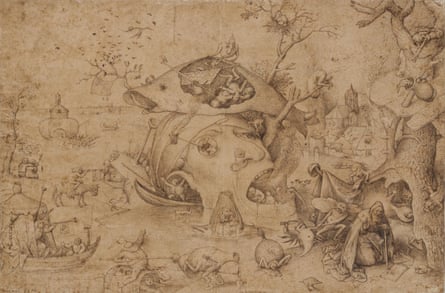
Pieter Bruegel I – The Temptation of St Anthony (1556)
Pieter Bruegel the Elder’s preparatory drawing for his famed print envisioned a world turned upside down, featuring nightmarish half-human hybrid creatures, and vessels cavorting around a giant screaming head.
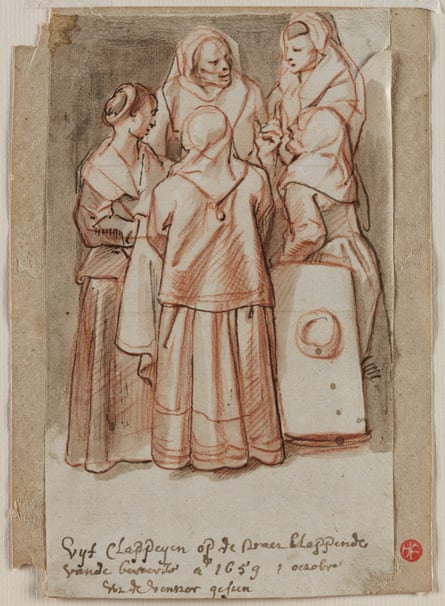
Jacques Jordaens – Five Women Chatting (1659)
Jordaens could turn his expert hand to anything. He was a master of character sketches, creating studies of heads that would end up in his paintings. This work was unplanned: a moment glimpsed from his window in Antwerp that he got down on paper in all its vivid immediacy.
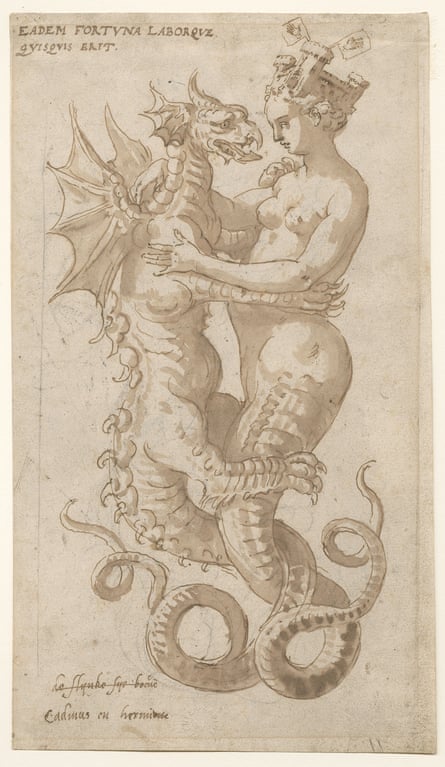
Maerten de Vos – Cadmus and Hermione: Design for the Decorations of the City of Antwerp (c 1594)
The exhibition includes sketches for temporary decorations for festivities now lost to time. This pen-and-ink drawing freezes a moment in Ovid’s Metamorphosis, when the cursed couple Cadmus and Hermione are transformed into dragon-headed snakes. The drawing was made in preparation for a festivity welcoming the area’s Catholic governor in an era when the area was riven by war between Catholics and Protestants.
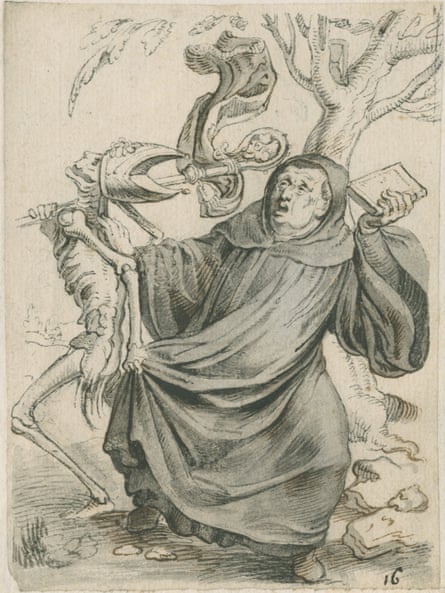
Peter Paul Rubens – The Abbot and Death (1590)
Rubens was just 13 when he created this drawing based on Holbein’s print series, the Dance of Death. In Catholic Flanders, the idea of everyone being equal before Death was a forbidden Protestant subject. Rubens’ series includes a knight, a judge and, in this image, an abbot being taken away by the skeletal reaper who cheekily dons the religious leader’s mitre.
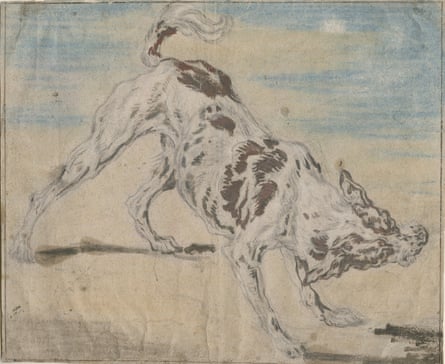
Joannes Fijt – Study of a Dog (1630s)
This wonderfully gnarly hound by the master “animalier” Fijt shows the painter’s incredible skill at capturing this moving animal in all its doggy vitality. This particular dog was a recurring Fijt model, perhaps his pet.


No comments:
Post a Comment